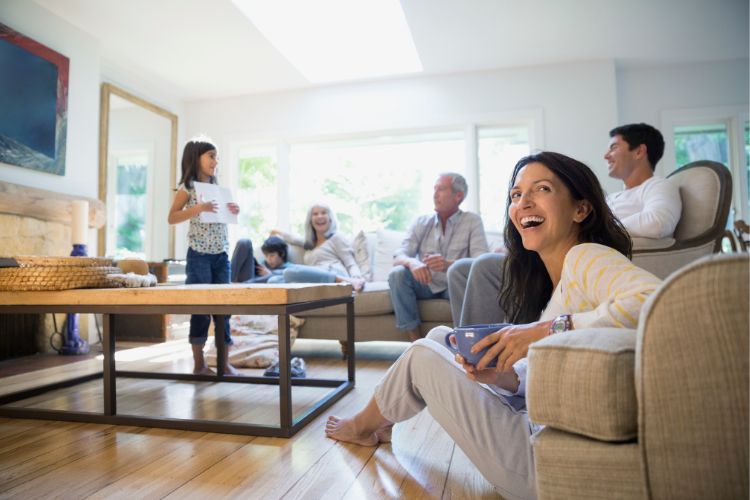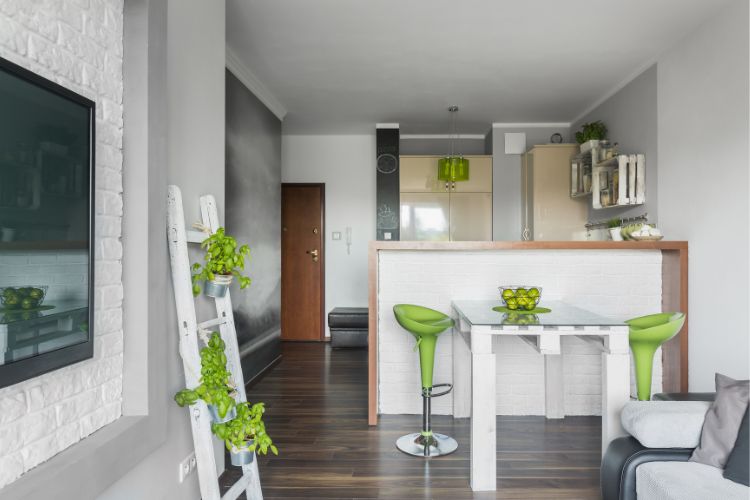



Get in touch
with us today…
Contact us for a private viewing to see a granny flat in your area today!

Employment Opportunities
We are always open to hiring motivated and creative workers who share our same passion to provide high-quality dwellings and attentive customer service.
If you are interested, please submit your details and resume.
How to Choose the Right Granny Flat Build for Multi-Generational Living

With the rise of multi-generational living in regions like Sydney, Melbourne, and Perth, many families are turning towards Granny Flats as the optimal solution to keep loved ones close, all while providing them with their own separate spaces.
Understanding how to design a Granny Flat to cater to the needs of children, teenagers, grandparents, and everyone in between is crucial. Creating a harmonious home environment requires careful planning, from individual bedrooms and bathrooms to personalised kitchens and study areas.
No need to stress — we’re here to help. This guide aims to help you navigate the challenge of designing a Granny Flat that not only meets the expectations of all family members but also optimises space, comfort, and value for money. Let’s get started!
The Benefits of Multi-Generational Living
- Connection and support: Multiple generations living on the same property, from children to grandparents, promotes consistent interaction and shared experiences, deepening family bonds.
- Financial savings: By sharing expenses and resources, multi-generational households can see a significant reduction in bills, housing costs, and even childcare expenses.
- Shared responsibilities: Day-to-day tasks, whether it’s gardening, house maintenance, or childcare, become a shared responsibility, easing the burden for multiple family members.
- Increased security: Having multiple generations on one property can enhance security with more people around to keep an eye on things. This is especially beneficial for older family members or children.
While the advantages of multi-generational living are vast, there are still crucial considerations. It’s essential to strike a balance between togetherness and privacy; without proper planning or the right design, close quarters can lead to conflicts.
For the sake of harmony and comfort for everyone, there needs to be clear boundaries and designated spaces.
The Financial Implications of Multi-Generational Living
Embracing multi-generational living arrangements can lead to significant financial benefits. For instance, pooling resources to cover household expenses, such as mortgages, utility bills, and maintenance, can drastically reduce the financial burden on individual family members.
As a bonus, a shared family home or Granny Flat can negate the need for elderly parents to transition into more expensive care facilities, leading to savings in the long run.

The Legal Considerations of Multi-Generational Living
Navigating the terrain of multi-generational living comes with its own set of legal implications. When converting part of a house into an office or lending out a room to external tenants, it’s essential to consider zoning laws, home business regulations, and insurance to ensure you’re complying with local requirements.
Additionally, while renting out a room to an external tenant in a residence shared with family, it’s advisable to have formal rental agreements in place. This not only provides clarity on rights and responsibilities but also protects all parties involved from potential disputes or misunderstandings.
Design Tips for Multi-Generational Living
- Private entrances: Design separate entrances for different generations, providing autonomy and reducing potential disturbances, especially if family members keep different schedules.
- Soundproofing: Invest in soundproofing between rooms or living areas to maintain privacy and reduce noise disruptions, catering to varying lifestyles within the household.
- Flexible living spaces: Incorporate convertible rooms that can be adapted as needs change, such as turning a study into a bedroom or vice versa.
- Accessibility: Opt for ground floor accommodation to avoid stairs, and implement accessibility features such as ramps, wider doorways, and grab bars in bathrooms for elderly residents.
- Shared outdoor spaces: Design a communal garden or backyard space that caters to all family members, from play areas for kids to serene spots for relaxation, ensuring everyone has a slice of the outdoors to enjoy.
How to Create Private Spaces in Multi-Generational Living
- Dividers and partitions: Incorporate movable dividers or partitions that can temporarily split a room into separate areas, giving family members their own nooks when needed.
- Landscaping for privacy: Utilise strategic landscaping in the garden or backyard, such as tall hedges or decorative screens, to create distinct private outdoor spaces for relaxation or activities.
- Separate living quarters: Consider design additions like a loft or a detached garden studio to provide older teenagers with their own separate space, ensuring both privacy and proximity.
- Personalised bedrooms: Encourage family members to personalise their bedrooms with their own decor, furniture, and amenities, turning them into true personal retreats within the home.
- Noise-control measures: Invest in quality insulation and soundproofing materials, especially in bedrooms and bathrooms, to ensure that private moments remain undisturbed.
- Shared spaces with designated hours: For spaces like home offices or study rooms, set designated hours where they can be used privately by individual family members, ensuring everyone gets their well-deserved alone time.
How to Choose the Right Granny Flat for Multi-Generational Living
- Assess family needs first: Before diving into designs, understand the unique needs of your family. Are accessibility ramps crucial for elderly members? Do teenagers require separate entrances for autonomy?
- Flexible design features: Opt for designs that can adapt as your family’s needs change, such as convertible rooms that can switch from a study to a bedroom.
- Prioritise common areas: For a multi-generational family, having communal spaces, like a large kitchen or living room, can facilitate bonding and togetherness while balancing the need for private space.
- Integrated vs. detached units: Decide whether an integrated Granny Flat (connected to the main house) or a detached unit is more suitable. While integrated units offer more connectedness, detached ones offer more privacy.
- Safety and accessibility: For households with elderly members or those with special needs, prioritise designs that emphasise safety, such as non-slip flooring, ample lighting, and handrails in bathrooms.
- Consult experts: Engage with housing experts or Granny Flat specialists to discuss your multi-generational living requirements. They can offer tailored advice and provide designs that may not be readily available in standard catalogues.
How to Create a Budget for Multi-Generational Living
- List all income sources: Account for the total income from all working family members. Consider any potential rental income if you decide to lease a part of your property, or savings from pooling resources.
- Understand upfront vs. recurring costs: Distinguish between the one-time costs of building or modifying a Granny Flat and the ongoing expenses of multi-generational living, such as utilities, groceries, and maintenance.
- Set aside a contingency fund: Multi-generational living can come with unforeseen expenses. Always keep a buffer, ideally 10–20% of your total budget, to manage unexpected costs without derailing your financial plan.
- Factor in future changes: Think about potential changes in family dynamics over time, such as children going to college or elderly members requiring more medical care, and adjust your budget projections accordingly.
- Seek professional financial advice: Consulting a financial expert can provide clarity on tax implications, potential grants for modifications, and how to maximise your investment in multi-generational living.
- Regularly review and adjust: As with any budget, circumstances and priorities can change. Make it a point to revisit your budget at regular intervals to make sure it remains aligned with your family’s evolving needs and goals.

Embracing the Future of Family Living: Choosing the Right Granny Flat
As the landscape of family dynamics and housing needs continues to evolve, multi-generational living in Granny Flats emerges as a practical and heartwarming solution. Balancing privacy with closeness fosters stronger family ties while providing economic and spatial efficiency.
As with any significant life decision, research, planning, and open communication are essential. By meticulously considering the design, financial, and legal aspects, families can craft a harmonious living environment that caters to every generation’s needs and desires.

Why choose Granny Flat Solutions?
When it comes to creating a space for your loved ones, choosing the right Granny Flat builder is crucial. That’s why Granny Flat Solutions is here to help.
Ready to make your Granny Flat dreams a reality? Contact us today for an obligation-free site inspection and quote!
Our friendly team of Granny Flat experts is here to guide you through the process, providing a personalised solution that aligns with your property’s unique requirements.
Experience the difference for yourself by exploring our numerous reviews and testimonials. Discover why we’re the trusted choice for Granny Flat construction in NSW.
Contact us today to build the Granny Flat of your dreams!
Ready to start your building journey? Chat to our team of experts today and get a FREE personalised quote
Find Out More
“Experience the difference for yourself.”
Call 02 9481 7443 or contact us online now to book your free site inspection and quote.







